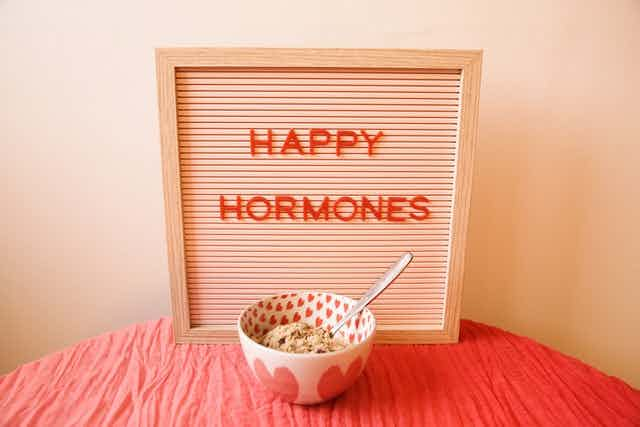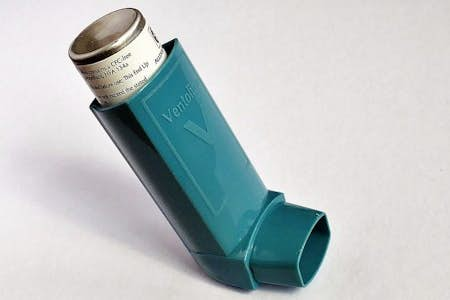Oestrogen dominance is an umbrella term that describes several situations in both men and women where hormonal oestrogen levels are abnormally high.
Oestrogen is often known as the female sex hormone, but it’s found in men and women.
Women have higher oestrogen levels than they do progesterone but also have a low level of testosterone.
Men also carry all three of these sex hormones but have higher concentrations of testosterone than women.
In either men or women, a higher oestrogen level relative to other hormones could indicate oestrogen dominance, also known as oestrogen imbalance.
What is oestrogen?
Oestrogen is a hormone that plays a crucial role in vital biological functions, including but not limited to our reproductive and sexual health. Oestrogen also plays a significant role in our immune system function, metabolism, skin health, bone health and much more.
The body relies on a finely tuned concoction of hormones to stay balanced, and when one is out of whack, such as oestrogen, this can cause issues.
What many people don’t realise is that oestrogen is a collective term in itself. There are varying types of oestrogen, including estrone, estradiol and estriol. Estriol helps prepare women for childbirth during pregnancy, whereas estrone is weaker in postmenopausal women. Oestrogen also helps regulate and modulate a woman's menstrual cycle.
Estradiol is the most common unisex form of oestrogen and plays a crucial role in spermatogenesis (sperm production).
Oestrogen dominance has risen in prominence lately, and more and more people are learning about it and self-diagnosing their oestrogen dominance.
Many of the common remedies for oestrogen dominance are by-and-large healthy habits in their own right. However, you must seek medical assistance if you intend to take any herbal remedies or medicines for your self-diagnosed oestrogen dominance.
What are the symptoms of oestrogen dominance?
The symptoms of oestrogen dominance are wide-ranging and can be hard to diagnose.
It’s important to remember that many of the following symptoms occur with various other conditions and may or may not indicate a problem at all.
If you’re in any way suspicious of oestrogen dominance or if any of the following symptoms persist without getting better or disappearing, then you should consult your doctor.
In rare cases, high oestrogen levels can increase the risk of certain types of cancer, blood clotting leading to heart attacks and stroke and thyroid disease, according to studies overviewed by Healthline.
Oestrogen dominance symptoms in women
It’s worth noting that the worst risks of oestrogen dominance are highest in women undergoing hormonal replacement therapy (HRT) to replace oestrogen lost after menopause.
It would be rare for oestrogen levels to rise this high on their own without any other indications of disease or HRT therapy.
For the most part, oestrogen dominance is associated with the following symptoms in women:
- Anxiety and panic attacks
- Bloating
- Cold extremities
- Decreased libido/sex drive
- FIbrocystic lumps in your breasts
- Hair loss
- Headaches
- Increased symptoms of premenstrual syndrome (PMS)
- Irregular menstrual periods and heavier bleeding
- Memory problems
- Mood swings
- Swelling and tenderness in your breasts
- Trouble sleeping or fatigue
- Weight gain
Oestrogen dominance symptoms in men
Men can experience much of the same general oestrogen dominance symptoms as women, but their sexual health is impacted differently.
Namely, high oestrogen levels in men can cause infertility as oestrogen is required to create healthy sperm. Gynecomastia is a rare condition where high oestrogen levels stimulate breast tissue growth in men.
Oestrogen also plays a crucial role in male libido - a lack of oestrogen can cause erectile dysfunction. Studies outlined in Medical News Today also found that oestrogen dominance in men was linked to depression.
Some of the main symptoms of oestrogen dominance in men include:
- Abdominal weight gain
- Bloating and digestive issues
- Brain fog
- Depression and anxiety
- Irritability
- Lethargy
- Low libido
- Mood swings
- Erectile dysfunction
- Trouble sleeping or fatigue
Is oestrogen dominance dangerous?
Oestrogen dominance usually only causes generalised, low-level symptoms. However, in the case of HRT therapy and more severe oestrogen spikes, high oestrogen levels can rise to dangerous levels.
Your doctor should closely monitor your hormone therapy plan.
Some common symptoms that prompt people to look up oestrogen dominance are low mood, fatigue and trouble sleeping, excessive weight gain, and low libido. In women, high oestrogen can also play havoc with the menstrual cycle, leading to excessive bleeding, cramping and unpredictable cycles.
Some women and also men are at higher risk of breast cancer or other cancers that high oestrogen levels can exacerbate.
Many of these symptoms prompt people to investigate hormonal imbalances, including oestrogen dominance. Persistent, moderately high oestrogen levels can cause these symptoms, but treatment is usually relatively straightforward.
However, it’s important to remember that a proper medical diagnosis is invaluable, especially if you intend to treat your oestrogen dominance using herbal medicines or supplements. Always seek medical advice in this scenario or if you're ever unsure.
We spoke to Dr Naomi Potter, founder of Menopause Care, who told Health Times: "Hormones are essential and have many functions in the body from regulating mood to growth, metabolism, sexual health and reproduction, It is a matter of balance, having too much or too little of a hormone and lead to symptoms and potential problems.
"Oestrogen keeps our bodies in tip-top condition, from helping to regulate our menstrual cycle to boosting our mood and memory, strengthening our bones and protecting our heart. Low Oestrogen can affect every organ system in the body and have an impact on hair thinning, skin changes, emotions, anxiety, memory loss, ear ringing, dry eyes, poor sleep, low libido, and muscle pain are just some of the symptoms that can be experienced.
"Oestrogen levels fluctuate as part of a normal menstrual cycle. Sometimes this is referred to as the oestrogen dominant part of a cycle. Persistently raised oestrogen levels that are above physiological range should be investigated."
How is oestrogen dominance diagnosed?
A doctor can order a blood test to check your hormone levels. Oestrogen is measured in picograms per millilitre (pg/mL). It’s pretty easy for a doctor to compare your oestrogen levels and your other hormone levels against others your age. It might not be that oestrogen is a problem, but that other hormones are, for example, in the case of high or low thyroid activity.
Usually, a doctor will test all of these hormones at once (or will give you a full blood workup).
You can also obtain these tests via private healthcare agencies and private laboratories, some of which are specialists in treating hormonal conditions.
How is oestrogen dominance treated?
Oestrogen dominance will be treated when levels are excessively high or when they exacerbate another health condition. For example, some types of cancer are sensitive to increased oestrogen levels.
Doctors can prescribe aromatase inhibitors that stunt oestrogen production, the three main types being anastrozole (Arimidex), exemestane (Aromasin) and letrozole (Femara). Medication can also stop the ovaries from producing oestrogen.
High oestrogen levels in these more serious contexts are pretty rare. Instead, most people want to tackle oestrogen dominance to improve their mood, lose weight, increase libido, get a better night's sleep and improve their general health.
What causes high oestrogen levels?
Many things cause slightly elevated oestrogen levels, the most common culprits being diet, being overweight, stress, anxiety and other emotional or mental health conditions.
High oestrogen can be caused by:
- Certain antibiotics
- Being overweight or obese
- Poor diet or malnutrition
- Excessive stress, anxiety or depression
- Hormonal contraceptives
- Phenothiazines, drugs used to treat some mental or emotional disorders
- Some herbal medicines
- HRT therapy
- Environmental toxins and pollution
- Lack of exercise
Some cosmetics may also contain xenoestrogens that mimic our own natural oestrogen. These include parabens, phthalates and benzophenones, but the evidence surrounding this is unclear and still developing.
One of the key things that cause high oestrogen levels is excess fat, but we also know that excess fat is related to low oestrogen dominance. So herein lies a problem - oestrogen has to be finely balanced to mitigate the effects of either high or low oestrogen, as both are potentially bad for us.
As this scientific study published in Biomedicine and Pharmacotherapy sums up: “Both hypo[low] and hyper[high] levels of oestrogen have been linked to chronic and acute diseases.”
How to avoid oestrogen dominance?
Most strategies for how to avoid oestrogen dominance or how to treat oestrogen dominance naturally revolve around the two headline acts in general health:
- Diet
- Exercise
Hormones are closely linked to our general health and homeostasis. While it’s possible to be fit and well but still suffer from some form of oestrogen dominance, the odds are slashed dramatically.
1) Lose weight
Losing weight is one of the single most potent things you can do to cut your oestrogen levels. This applies to both men and women. Oestrogen is created and stored in fat cells - excessive fat is linked with excessive oestrogen in several studies.
Breastcancer.org cites a study that found massive drops in oestrogen levels after participants followed a calorie-restricted diet for a year alongside exercise. Some observed reductions of some 20%. They found that this firstly reduced general oestrogen dominance and secondly cut the risk of breast cancer.
“This study offers more evidence that getting to and maintaining a healthy weight through diet and exercise is worth the effort. A healthy weight can improve your overall health, lower your risk of breast and other cancers, and make it more likely that you'll survive if you're diagnosed with breast cancer.” - Breastcancer.org.
2) Focus on diet
The link between poor diet and elevated oestrogen levels is well-established. For example, red meats, processed sugars, carbohydrates and other processed foods have been frequently observed to increase oestrogen in men and women.
Conversely, diets rich in grains, dark green veg, Omega-3 and other vitamins and minerals reduce oestrogen levels. Fibre is also essential as oestrogen dominance has been linked to digestive health.
Deficiency in specific vitamins and minerals could also be linked to oestrogen dominance. Magnesium is one candidate, as are B-vitamins.
The Mediterranean diet is a fantastic way to reduce oestrogen levels and restore general hormone balance - you can read more about that here
3) Build an exercise routine
Exercise is a wonderful stimulant of all sorts of hormonal activity and has been linked with reductions in oestrogen.
One study published in the Journal of Applied Physiology found that regular exercise could successfully reduce high oestrogen levels associated with increased breast cancer in at-risk women. In both men and women, strength training, in particular, can boost muscle production, which in turn boosts testosterone, also lowering oestrogen.
If exercise helps you lose weight, then that's a bonus. However, it's crucial to think about whether you’re meeting your exercise needs if you’re looking into oestrogen dominance as a probable cause of lethargy, fatigue and weight gain.
It may seem like a vicious circle that you can't escape. But, armed with some fitness challenges, exercise plans for burning belly fat and workout plans, you can step up your exercise to reduce oestrogen dominance. The first step is the toughest - once you’re launched, you’ll be well on your way to restoring hormonal balance.
4) Manage stress
Easier said than done, we know, but managing stress is one of the most important things we can do for our general health. Stress is strongly associated with elevated oestrogen levels, which can significantly affect our general health.
Stress is also linked with our diets and exercise levels, which is good news, as improving in these areas will reduce our stress levels. However, the first step in stress management is usually the hardest, and that step is often to admit that we do feel stressed.
Being aware of when you feel stressed and why enables you to take a step back from stressful situations.
There are so many excellent resources online that teach us about stress. Check out
- Mindful: 9 ways to reduce stress
- Very Well Mind: effective stress relievers for your life
- NHS: 10 stress busters
You can also consider apps such as Headspace and Calm. Guided meditation is another excellent technique to look into - there are many videos on YouTube.
What is oestrogen dominance?
Oestrogen dominance is a general or umbrella term for elevated oestrogen levels.
In some cases, oestrogen dominance can pose more serious medical problems that a doctor should assess. Always seek medical assistance if you’ve been experiencing new or changed symptoms that persist and don’t go away on their own.
Minor oestrogen dominance can contribute to poor sleep, fatigue, low libido, brain fog, weight gain and similar symptoms. This is often why people research oestrogen dominance, and it is true that it can play a significant part in some of these symptoms.
The natural, healthy and holistic way to tackle low-level oestrogen dominance (e.g. that isn't caused by HRT) is to focus on diet, exercise, stress and weight. If you can successfully improve these four key areas, you'll likely see improvements in your oestrogen dominance-related symptoms.






